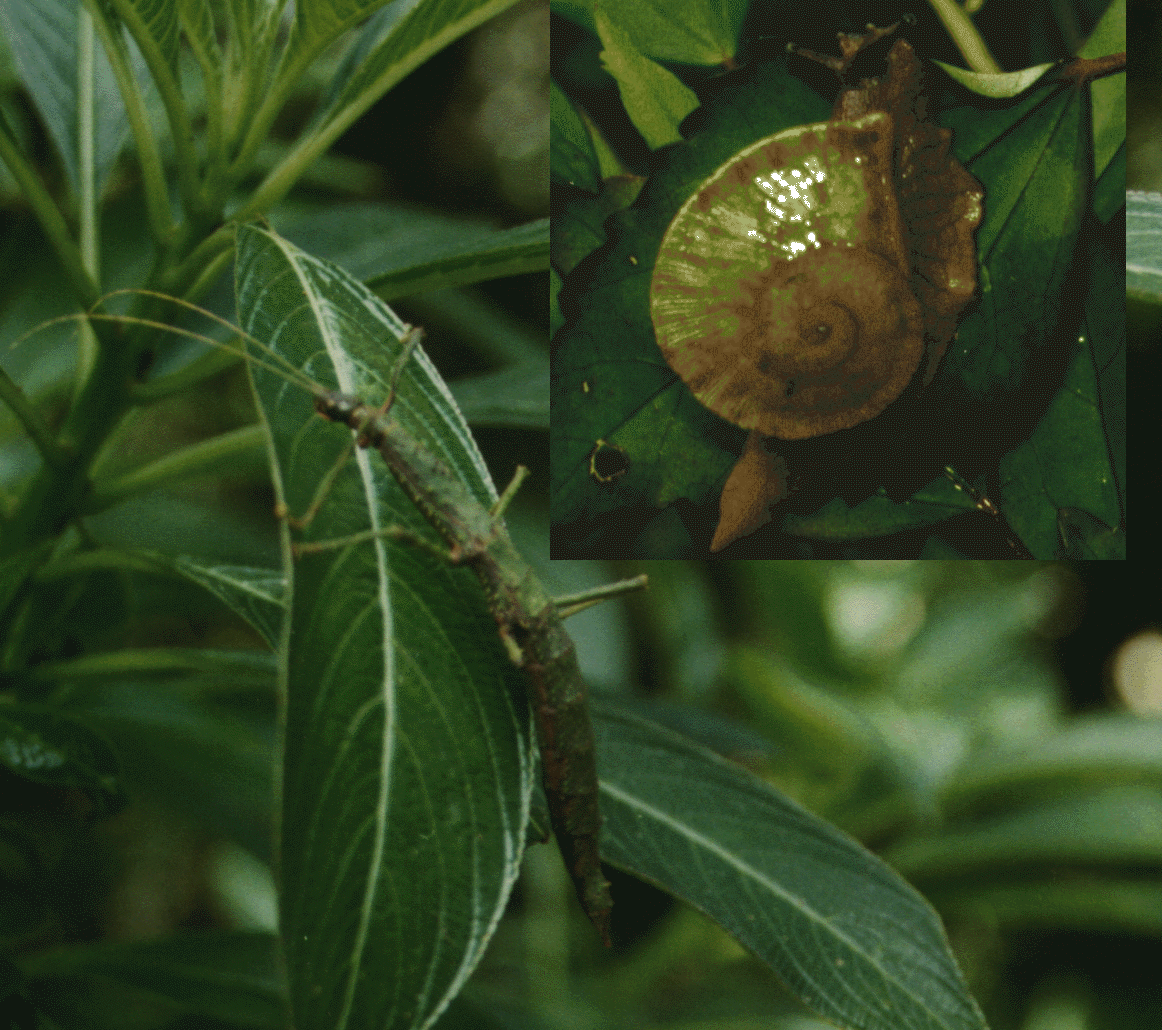Behavorial EcologyHabitat and diet selection are interrelated "decisions" made by organisms which have profound effects on fitness. Understanding the proximate cues and ultimate factors affecting both consequently assume major importance in the conceptual development of evolutionary ecology.
Diet Selection.--I have examined the foraging ecology of arboreal rodents (Kerodon rupestris-Lacher et al., 1983; Willig and Lacher, 1991), stick insects (Lamponius portoricensis-Sandlin and Willig, 1993), and aquatic snails (Marisa cornuarietus-Grantham et al., 1993; Grantham et al., 1995) from the perspective of optimality theory. These folivorous animals all exhibit complex patterns of consumption that differ from the predictions of classical optimal foraging models. The nature of the disparities suggests foraging with nutrient constraints. I am interested in the nutrient attributes that affect food choice in folivores and the degree to which previous exposure or variation in food quality modifiesselectivity. I use experimental approaches in combination with linear programming techniques to understand the mechanics of food choice. In response to changes in the absolute or relative proportions of foods in the environment, both Kerodon and Lamponius alter their diet, switching preferred foods as well as modifying the total amount of consumed food. Nonetheless, both species maintain a remarkably consistent ratio of nutrients in their diet. I am increasingly interested in the effects of previous exposure to subsequent consumption, and in particular how foods that differ in the content of easily stored versus not easily sequestered nutrients modify diet choice. Research with Marisa suggests that preexposure to foods high in energy results in differential consumption of foods high in nutrients but low in energy. In contrast, preexposure to foods high in nutrients but low in energy does not affect subsequent patterns of consumption. This suggests that ability to store dietary constituents in different manners affects food selection in a profound manner.
Habitat Selection.--I have examined habitat associationsin a variety of organisms in terrestrial (walking sticks, snails) and aquatic environments (various species of predaceous Hemiptera), using observational (Secrest et al., 1996; Sites and Willig, 1991; Willig et al. 1993, 1998) and manipulative experiments (Herrmann et al. 1993; Secrest and Willig, Unpubl. Ms.; Willig et al., Unpubl. Ms.). In particular, Iam increasingly interested in decoupling selection of habitat based on current velocity from that based on substrate characteristics. More importantly, ongoing research is examining a model of density-dependent habitat selection which offers great promise is providing a currency to assess the relative importance of environmental characteristics to fitness (Willig and Croyle, Unpubl. Ms.). Finally, recent collaborations with Daryl Moorhead and our joint MS student (Carla Gurthrie) have returned to first principles and have modeled habitat choice based on density dependence as embodied in logistic growth models with and without interspecific competitors. These models provide a solid analytical basis on which to understand how variation in the biotic environment affects habitat choice and the coexistence of species in time and space. |
Please contact steven.presley@uconn.edu or michael.willig@uconn.edu if you have questions, comments, or corrections. Unless otherwise indicated, figures, tables, and images that appear on this page may not be used, reproduced, copied, or posted elsewhere, for any reasons, without permission. |

